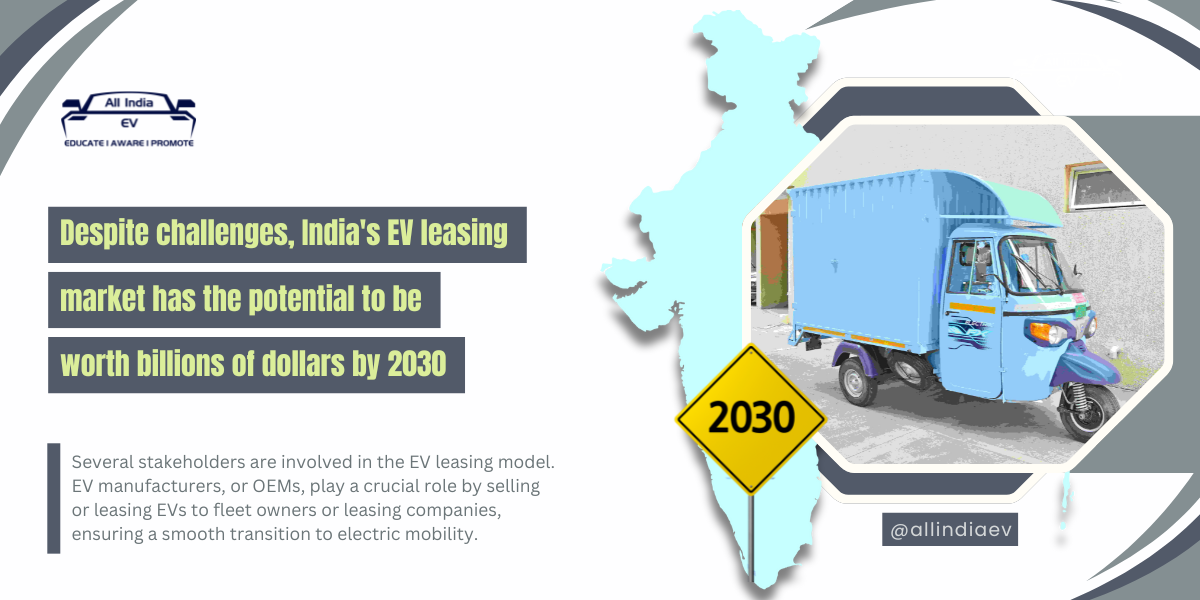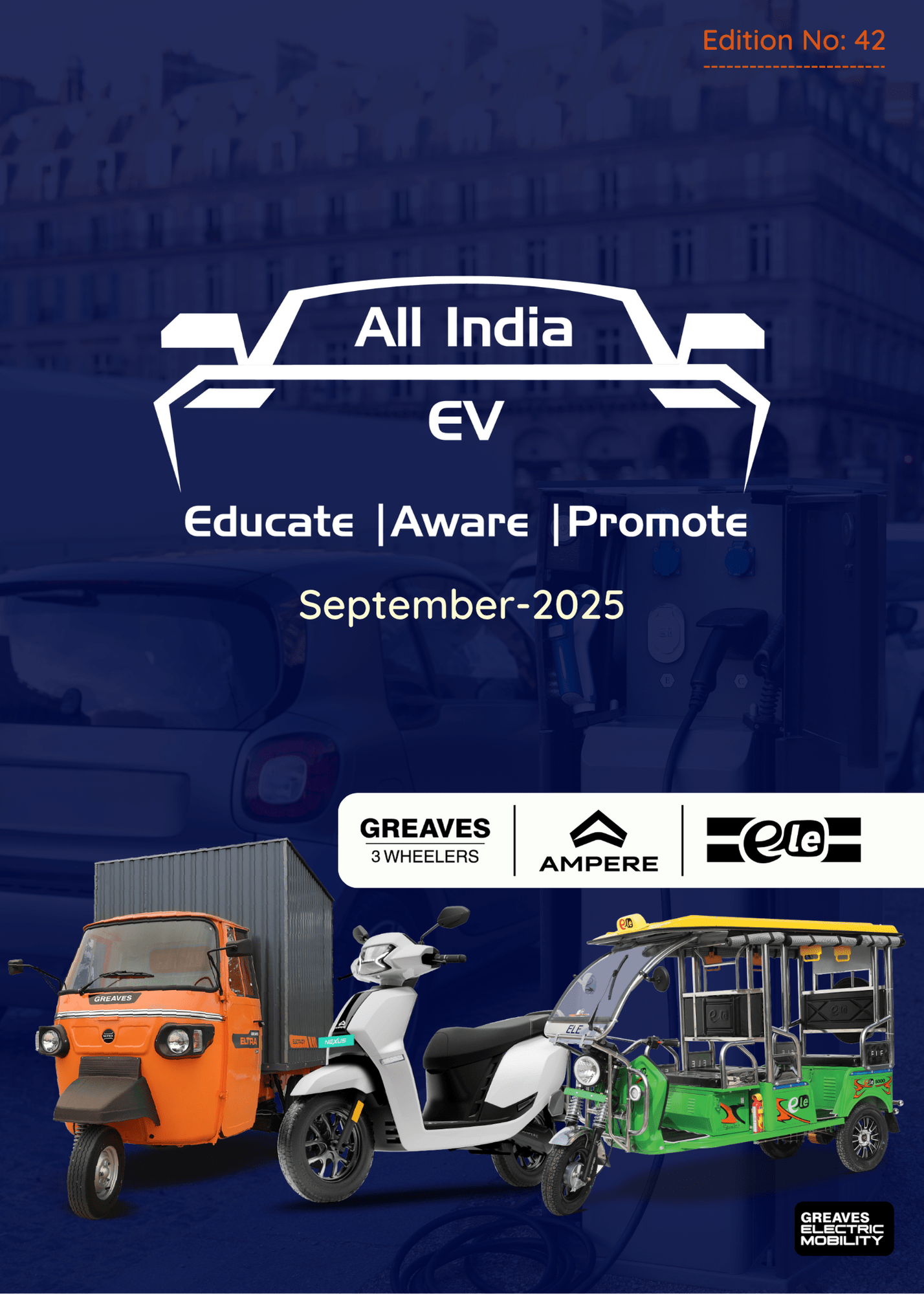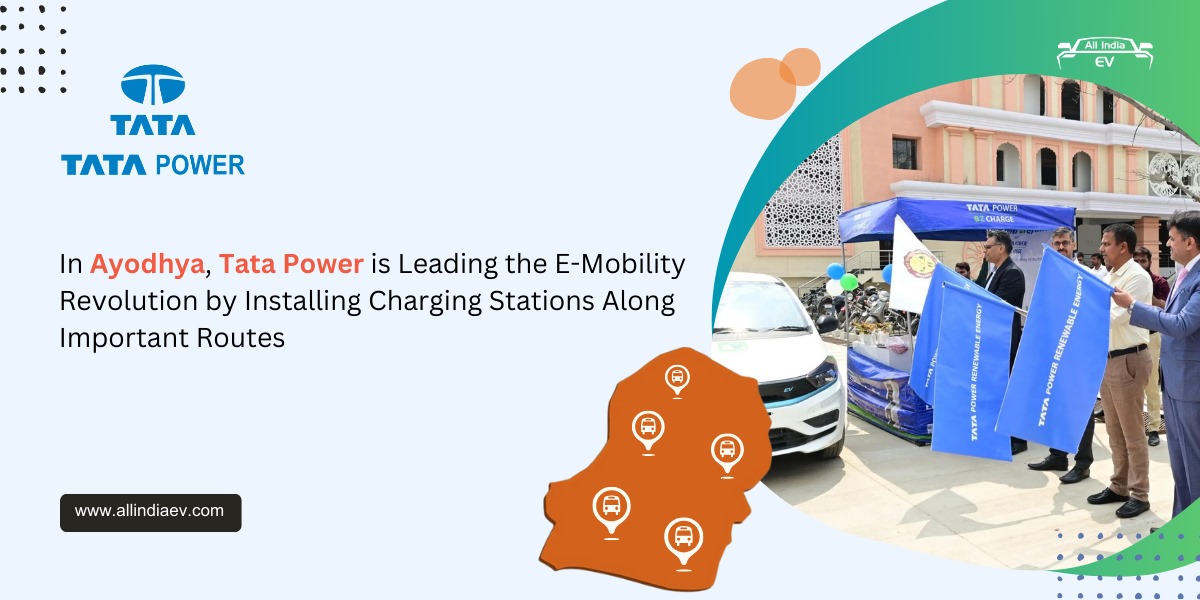
The Billion-Dollar Potential of India’s EV Leasing Market
The Indian electric vehicle (EV) leasing market is on the brink of a major expansion. Currently valued at around USD 170 million, it’s projected to skyrocket to USD 4-5 billion by FY30, fueled by a staggering compound annual growth rate (CAGR) of 73%. Commercial vehicles (CVs) are expected to play a pivotal role in driving this surge, accounting for the lion’s share of the leasing opportunity.
EV Leasing: A Complex Ecosystem
Q: What are the key components in the EV leasing model?
A: The industry of the EV leasing model encompasses many interconnected entities. The OEMs develop electric vehicles, and manufacturers either sell or lease the vehicles to fleet operators or leasing companies. The fleet owners or leasing companies purchase the EVs from OEMs and in turn lease them to electric vechicle fleet operators, the end-use customer. The end-use customer can be assistance companies for transportation, e.g. logistics and ride-hailing, corporate commuting companies, or individual customers purchasing for their own use. These end-use companies use the electric vechicle in their fleet or operations. Other industries that support the logistics or transportation sectors can also utilize leased EVs for transportation or use as part of a service.
Q: What are the major challenges that are stopping the growth of the leasing market?
A: While the leasing electric vechicle market is poised to take-off, the leasing market faces several critical challenges. The cost for an electric vehicle is still so high that leasing will have a higher monthly rate compared to a gas vehicle, thus making it difficult for the leasing company to remain competitive. Uncertainty with the resale value in the market is still an issue used by the lessee to determine if they will lease an EV or not, due to limited lease history, rapid technological advancements of vehicles higher resale values over time, and tax advantages decreasing faster than potential problems at the end of the lease terms.
Q: How can these challenge be addressed to help facilitate and improve the leasing market?
A: In order to mitigate and facilitate the hiccups that will expand the electric vechicle leasing market, stakeholders must find ways to work together. Government incentives can help subsidize the costs of electric vechicle leases by providing tax breaks or other investments. Continued research and development of battery chemistry and charging infrastructure will also be a big player in the decrease in overall vehicle costs in the market and provide better resale value as well.
EV Leasing: A Growing Market
Q: What are leasing companies doing regarding the leasing market issues?
A: While the EV leasing market is experiencing some challenges due to upfront costs, the leasing companies are hard at work finding ways to address these challenges. By signing exclusive electric vechicle procurement agreements with OEMs and leveraging incentives, including tax breaks and other government incentives, leasing companies can pass along a lower price to effectively compete. Furthermore, bundled services for charging, service and maintenance all in one place could alleviate some of the operational costs for drivers while lowering their contractual cost. The current focus on sustainability paired with increasing opportunities for corporate fleet offerings has value as businesses hope to reduce carbon emissions.
Q: What is the outlook for financing in the market?
A: The outlook is also very positive for financing EVs. The total disbursed loan value for EVs was USD 2 billion in FY24 and with the increase in electric vechicle adoption is expected to reach USD 31 billion in FY30. The financing penetration for E2Ws was about 40% in FY24 with an LTV cycle at 70% and is expected to reach 55% and 80%, respectively, by FY30. The finance penetration for E4Ws is projected to reach 80% by FY30 compared to the FY24 level of 70%. In the electric CV space the financing penetration is expected to reach 95% by FY30. This data suggests more financing options available to EV buyers.
EV Financing: A Changing Landscape
Q: What is the difference in financing parameters between EVs and ICE vehicles?
A: Financing parameters, such as interest rates and loan tenures, differ between electric vehicles and internal combustion engine vehicles (ICE). For instance, banks typically charge about 0.5% lower interest rate to E2W buyers compared to ICE two-wheelers. Meanwhile, commercial electric vehicles generally receive interest rates around 1-7% higher than ICE vehicles. Electric vechicle customers will also be tasked with shorter loan tenures, higher interest rates, lower Loan-to-Values (LTVs) – in addition to incurring a battery replacement cost.
Q: What do financiers find challenging in financing EVs?
A: Financiers also find it challenging to finance EVs – a concern raised in the Praxis Global EV Report. An immature resale market and uncertainty about the value and degradation of batteries is risky for financiers in this sector. In response, financiers typically mitigate these risks with low LTVs, high interest rates, and shorter loan tenures. As electric vechicle adoption rises and financiers accumulate more data about electric vechicle behavior, they are expected to relax these measures and start offering loans under similar terms associated with ICE vehicles. Financiers may also use data gathered around vehicle usage, battery health and rider behavior to better understand risk and improve lending decisions.









